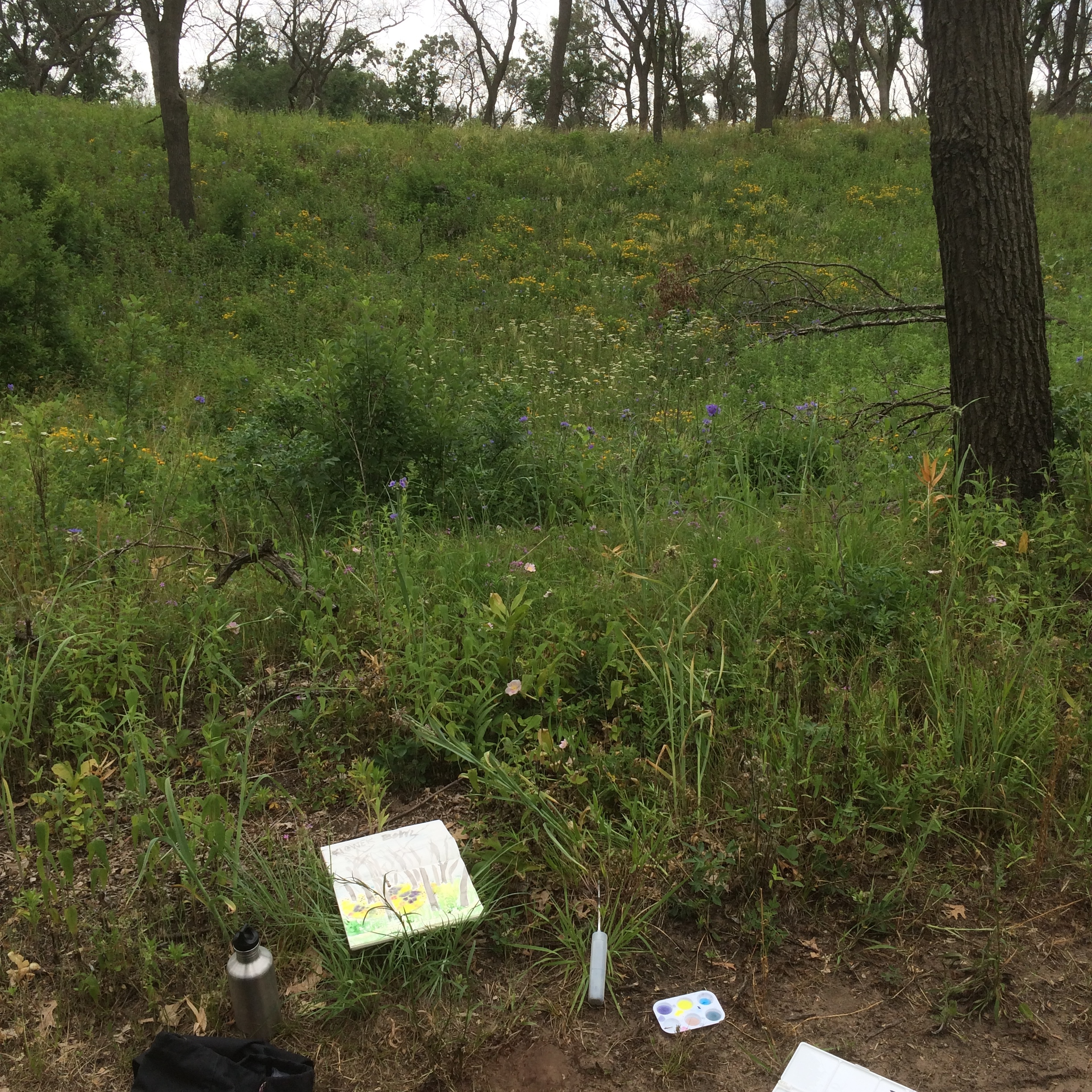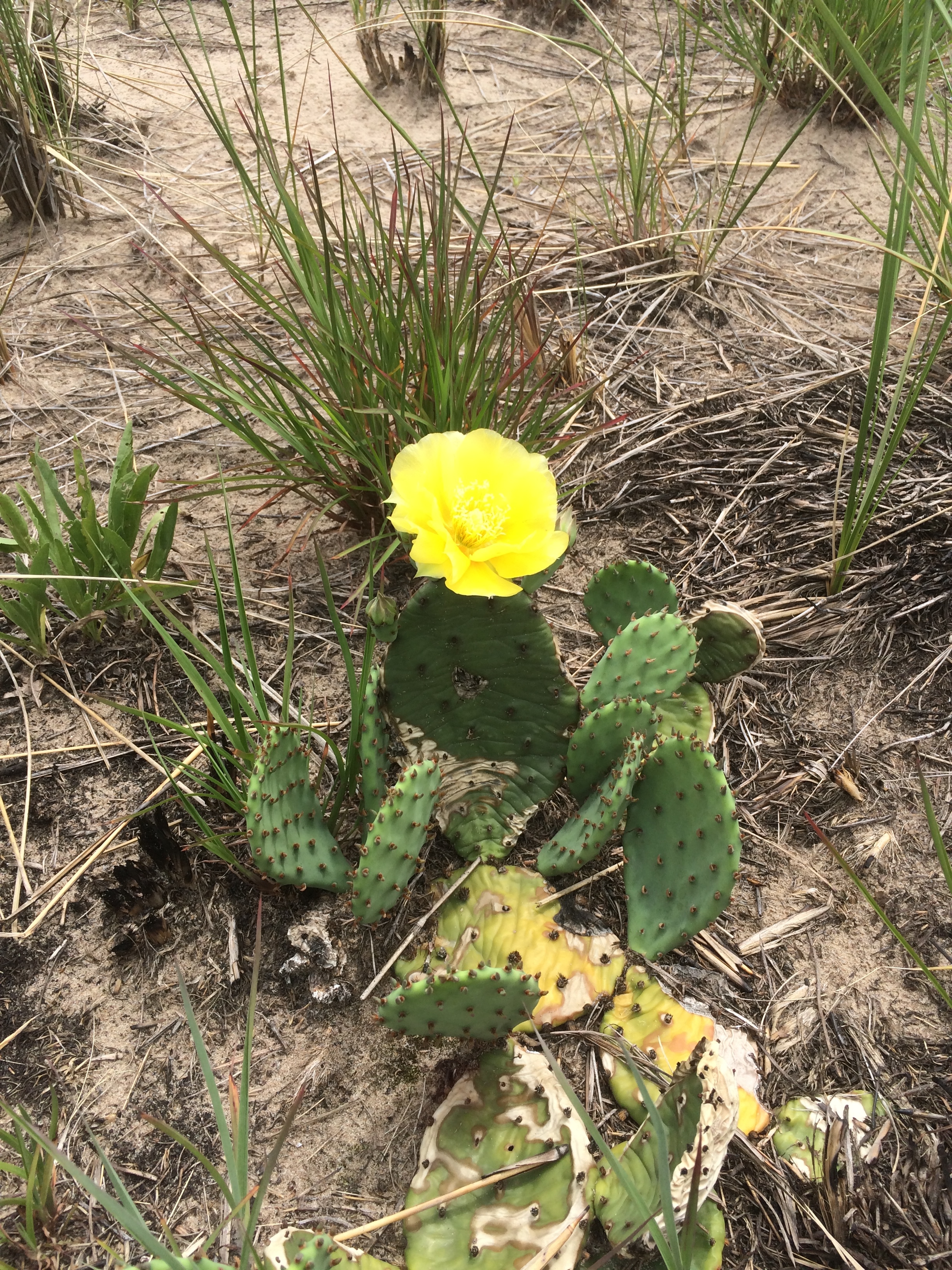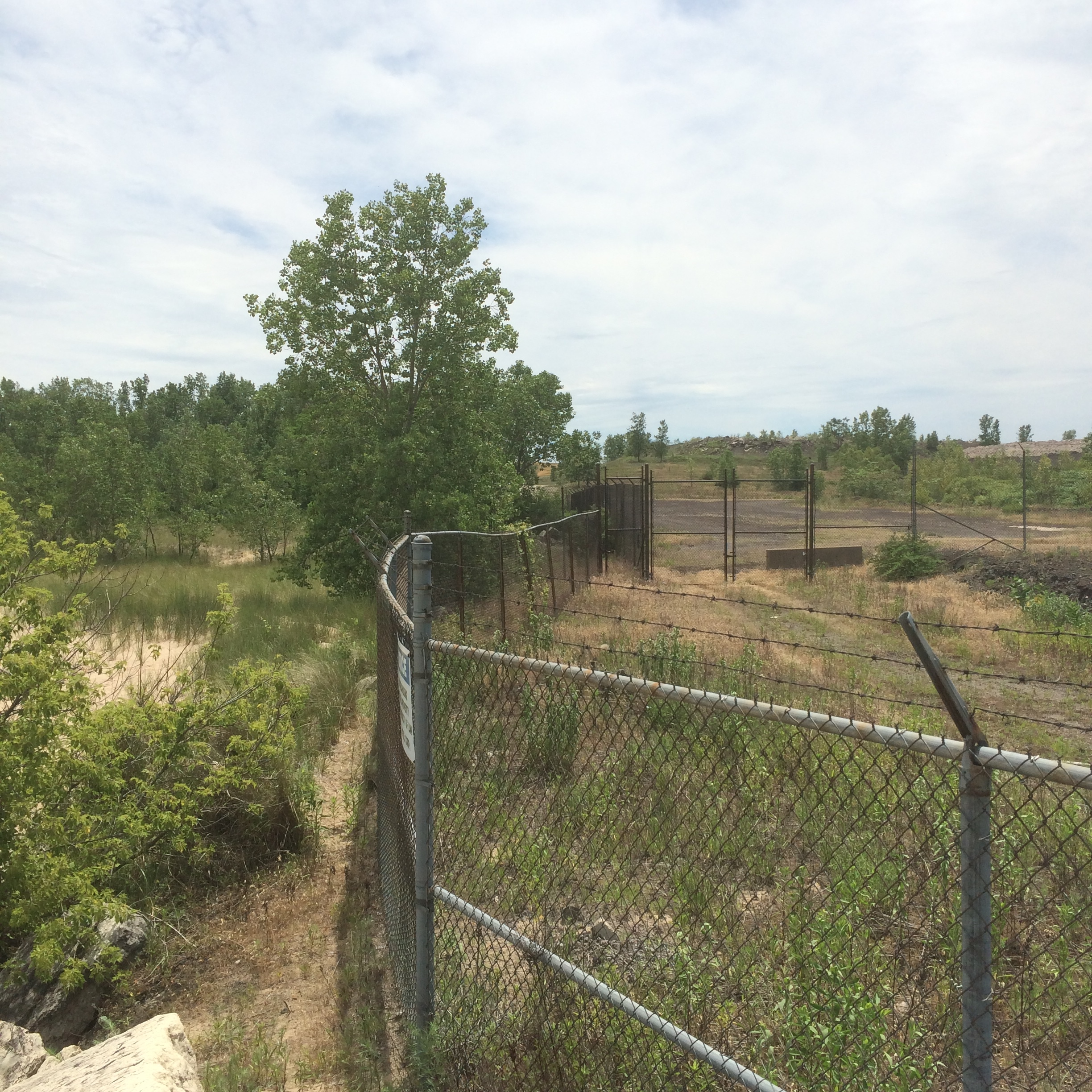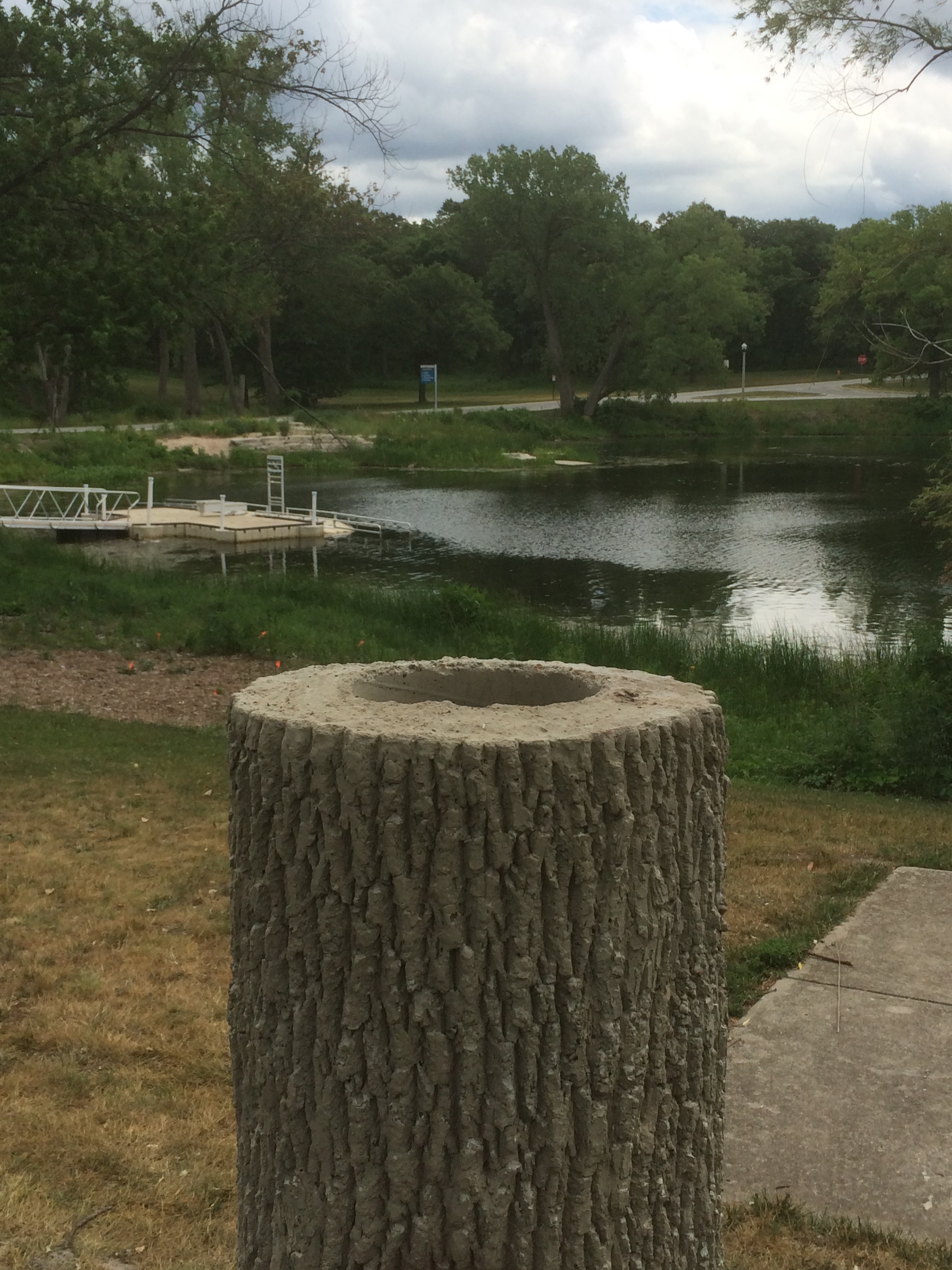Black Oak Savanna, Indiana Dunes National Lakeshore
In June of 2017, I enjoyed 2 weeks as the Artist in Residence at the Calumet Artist Residency in Gary, IN. I have been to Gary a number of times over the years, but I have not previously had the time and space to develop a concrete connection to this unique and dramatically varied environment of the dunes.
During the visit, I toured the downtown of Gary and had the chance to go in some historic architectural spaces. The WPA funded, Gary Post Office (1936), is open to the elements. Ostrich ferns oscillate on the floor in patches where the sun cuts through the open roof. There are plans to stabilize and re-purpose the City Methodist Church (1925), one of the first million dollar churches in the country, into a ruins garden open to the public. The boarded up windows of Union Station (1910) have been replaced with murals, and community members are creating a public garden around the structure.
These sites are heart-wrenching and unmistakably beautiful in their states of decay, but there is also an immense weight attached to them that I'm guessing the people of Gary have to carry around with them everyday. While it's uplifting to see the community gathering around and bringing positive energy to this story, as an artist, this complex social history is not my story to tell. Instead, I decided to use my short residency time to connect to the natural history of this area – the plants and animals, the humidity, the wind, the water and the clouds.
The residency is in the Miller area of east Gary next to the national park. And while Miller is inseparable from the downtown story, for me, the narrative here is more about a natural ecosystem fighting and shining between a lakeside powerplant and the largest steel mill in North America.
The line - Google screen shot
US Steel is the founder, and arguably the destroyer, of Gary as well as the NIMBY neighbor of the national park. People have worked to protect this area. From historic organizations and individuals like "Save the Dunes," who fought for the establishment of the national lakeshore in 1966 to contemporary artist/activists like the Calumet Residency founders Corey Hagelberg (http://www.coreyhagelberg.com/) and Kate Land (calumetresidency.com).
The residency house sits at the top of one of the tallest forested dunes in the area. A short walk down and across Lake Street will take you into the national park.
Dunesteps to the residency house
National Park Trail
In the park, sandy paths break off in multiple directions into the oak savanna. These trails go up, down, and between the dunes and lagoons. Furrowed black oak trunks protrude from the ferns, flowers, and grasses that cover the under story.
Lagoon in the park
The trail transitions toward the beach into a more raw and windswept dunescape. The oaks become gnarled and dwarfed, marram grasses begin to take root, even prickly pear cactus line the winding trail.
Even with the nearby public beach and adjacent residential areas, these inter-dunal valleys create surprisingly private spaces to relax and reflect.
Crossing the last sandy dunes leads to the beach. You can follow the edge of the national park west to the imposing barrier of US Steel or you can head east to public beaches and the historic Marquette Park.
The east barrier of US Steel - adjacent to the national park
Another highlight of this residency was a public sculpture I created for Maquette Park. A slide show of images and project information can be found below. I am also working on a woodcut that I will add to this site when finished. Thanks for taking a look.
In Memoriam
The emerald ash borer has hugely impacted the ash population of northwest Indiana including the Miller neighborhood of Gary. This sculpture serves as a memory to the lost ash trees but also to promote awareness about other native and invasive species of plants and pests in this area. The sculpture will be a feature of a new native-plant educational garden in the park. Doubling as a planter, the concrete sculpture will sprout native species from the trunk of the memorialized ash tree. With this sculpture, there is an element of rebirth or growth from decay, that reflects the optimism of the natural world and the people of Gary.
Follow these links to more information about this project and or the EAB in your area:
http://www.joshkwinkler.com/eab

























